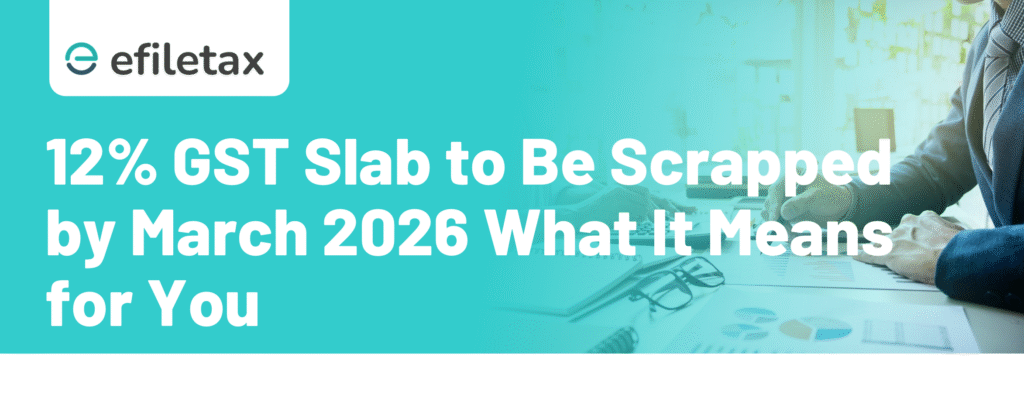
12% GST Bracket to End by March 2026 What It Means for You
The 12% GST bracket is set to be eliminated by March 2026, as per the government’s ongoing efforts to simplify India’s GST rate structure. Most goods and services under this slab will likely be moved to the 5% GST rate, easing tax compliance for small businesses and taxpayers.
This strategic shift comes after repeated recommendations by the GST Council and aims to reduce classification disputes, litigation, and cascading rate issues.
Why Is the 12% GST Bracket Being Removed?
As of now, GST in India is levied under four main slabs: 5%, 12%, 18%, and 28%. But over time, this multi-rate system has drawn criticism for being complex and confusing for businesses.
Here’s what’s driving the change:
- Simplification of the tax system: Merging slabs reduces ambiguity in classification.
- Ease of doing business: Helps MSMEs who struggle with rate determination and compliance.
- GST Council intent: Discussions from multiple GST Council meetings have pointed towards two-rate simplification in the long run.
📌 Expert View:
“The 12% slab has the least number of items but causes the most confusion in classification disputes. Moving to a 2–3 slab system will help unify the tax base,” says a senior GST consultant at Efiletax.
What Currently Falls Under the 12% GST Rate?
Below is a sample list of goods and services currently taxed at 12% GST:
| Category | Examples |
|---|---|
| Processed foods | Fruit juices, frozen vegetables |
| Building materials | Tiles, ceramic products |
| Household goods | Sewing machines, water heaters |
| Services | Rail transport (AC class), hotels with ₹1,000–7,500/day tariffs |
Source: CBIC GST Rate Schedule
What Will Happen to These Items?
- Bulk of items will move to 5% slab
- Some may shift to 18%
For luxury or non-essential goods, a few items may migrate upward to the 18% slab, but the overall direction is toward simplification.
Timeline and Transition Plan
| Phase | Timeline | What to Expect |
|---|---|---|
| Evaluation & consultation | FY 2025-26 | Fitment Committee to review item-by-item |
| GST Council resolution | By Q4 FY 2025-26 | Final list of slab movements to be decided |
| Notification & rollout | Effective April 2026 | 12% slab officially removed |
This phased approach allows businesses and software systems to adapt smoothly.
Legal & Policy Basis
- GST Council Minutes: Multiple meetings (esp. 47th and 49th) discussed rate rationalisation.
- Finance Ministry Communication: Confirmed the plan to reduce slab multiplicity in Budget 2024.
- CBIC Circulars & Notifications: Final rate changes will be notified under Section 9(1) of the CGST Act, 2017.
Impact on Small Businesses
Lower tax burden: If your product shifts from 12% to 5%, pricing becomes more competitive.
Reduced classification disputes: Avoids the hassle of litigation or Advance Rulings over rate ambiguity.
Simplified invoicing: Fewer rates mean easier software setups and compliance.
FAQs on 12% GST Removal
Q1: Will all 12% items go to 5%?
Not necessarily. Essential goods likely will, but some may go to 18% depending on usage and revenue impact.
Q2: When will the government notify the changes?
Most likely by early 2026 after the GST Council’s formal approval.
Q3: Will this affect Input Tax Credit (ITC)?
No, ITC mechanism will continue as is, based on revised applicable rates.
Summary
Most items in this slab will shift to 5%, simplifying India’s GST structure and reducing classification issues for small businesses.
Final Thoughts
The removal of the 12% GST bracket is a step toward a cleaner, two or three-rate GST structure. It simplifies compliance, lowers litigation, and makes the tax system more predictable. At Efiletax, we’re tracking every GST Council update so you don’t have to.